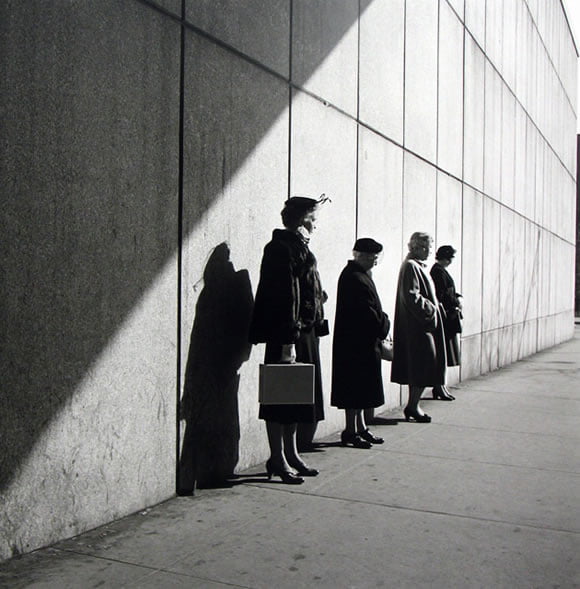The San Francisco Museum of Modern Art (SFMOMA) presents Lunch Break by Sharon Lockhart on view October 15, 2011, through January 16, 2012.
Sharon Lockhart: Lunch Break, is the latest body of work by Sharon Lockhart. The exhibition, organized by Sabine Eckmann from the Mildred Lane Kemper Art Museum, St. Louis, and overseen at SFMOMA by Curator of Media Arts Rudolf Frieling, will include a large-scale film installation, selected photographs, and a Bay Area edition of the artist’s free take-away newspaper, the Lunch Break Times. Through film, photography, and the print medium, Lockhart reflects on the presence of the individual in the context of industrial labor.

Sharon Lockhart, Lunch Break (Assembly Hall, Bath Iron Works, November 5, 2007, Bath, Maine) (still), 2008; 35mm film transferred to HD, 80 min.; courtesy the artist and Blum & Poe, Los Angeles; © Sharon Lockhart
To create Lunch Break, the artist spent a year observing and engaging with blue-collar workers during their daily routines at Bath Iron Works, a naval shipyard in Bath, Maine. This allowed Lockhart to shed her outsider status and establish a level of intimacy and comfort with the workers. As the artist explains, “In all of my projects, I work hard to make the participants partners, so that the exchange is a personal one.” Lunch Break did not materialize without a struggle, however. Lockhart’s first attempts to enter the historic shipyard—the largest private employer in the state and owned by General Dynamics, the world’s fifth-largest defense contractor—were repeatedly rejected by the company. But, after spending time in Bath, she secured a meeting with the local union, which supported her work and successfully lobbied for her access to the factory.
The film depicts the activities of the workers during their midday break at the shipyard. Extending ten minutes of footage into eighty minutes, Lockhart’s camera passes through a long corridor of the factory in extreme slow motion, tracking 1,200 feet of the hallway without panning, zooming, editing, or changing in tempo. The factory workers conduct their normal lunch break routines, some reading, some taking a nap, some in groups and others alone, talking, eating, drinking, and listening to the radio. The depicted space in Lockhart’s film is echoed in the architecture of the gallery installation at SFMOMA, a viewing space designed by Frank Escher and Ravi GuneWardena, and enhanced by a composition of industrial sounds collected from the factory space by filmmaker James Benning and composer Becky Allen.
“The extremely decelerated movement and the swelling soundtrack create anticipation for what is to come, while also establishing a sense of pause that allows the viewer to experience the film more like a photograph or tableau vivant,” Frieling says. “In Lunch Break we can examine details that would be too quickly passed over at the regular speed of film. The viewer’s attention and perception are constantly at work.”
The contemplation of the workers’ activities during their time off from production brings into view an everyday situation that foregrounds the presence of the individual. In contrast, the related photographic series emphasizes the actuality of individual objects, routines, and spaces: stickers on a lunchbox or the makeshift booths where workers sell snacks and various items.
Yet while Lunch Break focuses on day-to-day details, it reflects a much larger contemporary political and economic reality. The project’s attention to the local and to the rarely portrayed experience of the working class take on a particular social and political relevance in the context of global capitalism, war, and economic recession.



